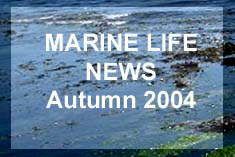
|
|
|
|
 |
|
Norwegian Marine*** |
|
L-I-N-K-S to Other Sites (Click on Text) |
|
Smart Group |
|
|
|
|
|
|

Monthly Marine News Bulletin |
|
Marine Nature Conservation Review Survey Database |
|
|
 |
|
|
|
|
|
|
|
|

SPRING
2005
April
to June
Reports
of marine wildlife from all around the British Isles, with pollution incidents
and conservation initiatives as they affect the fauna and flora of the
NE Atlantic Ocean.
For
more reports click on the seasonal buttons below:
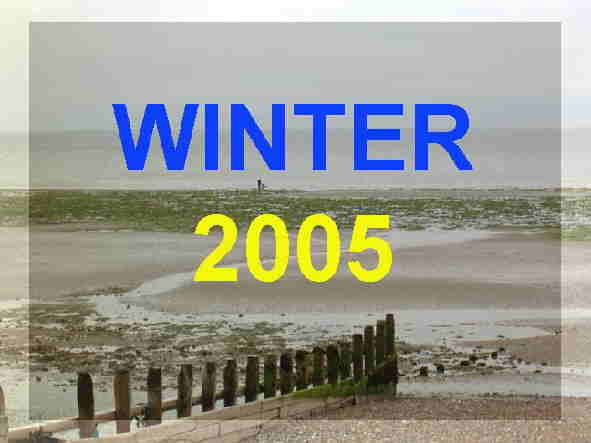 |
 |
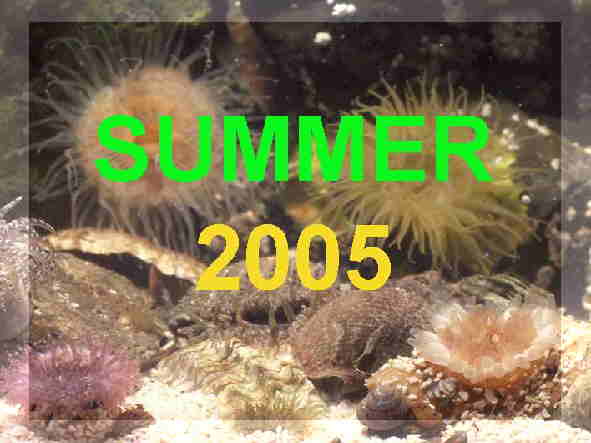 |
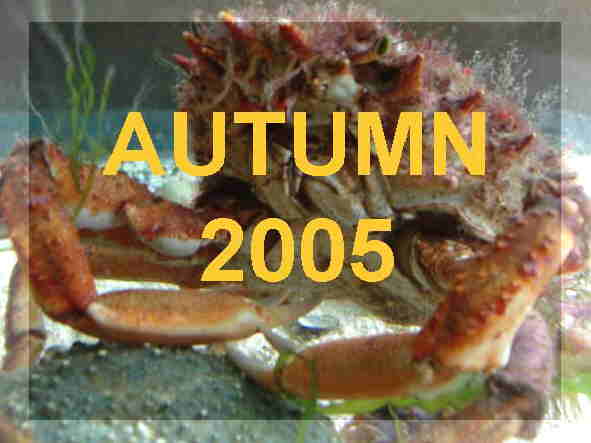 |
on Microsoft Internet Explorer (best) or Netscape
LATEST NEWS
28 June 2005
After a noticeable absence of Minke Whales, Balaenoptera acutorostrata, in the outer southern Moray Firth (NE Scotland) in 2004, we are pleased to report that the animals have returned to their usual feeding haunts once again in 2005. At least two were definitely observed, and there were certainly more in poor weather conditions.
Subsequent Report
A group of a dozen Sperm Whales, Physeter catodon, including a calf, were spotted between Bressay and Noss in the Shetland Isles (island off the east mainland). From a vantage point overlooking Noss Sound, we were rewarded by the sight of a group of Sperm Whales gently drifting eastwards at a distance of about two miles. Visibility was fairly good and we could determine the distinctive outline and classic blow through the scope, though they were a long way out when viewed through binoculars. Despite the variety of whales and dolphins around the Shetland Isles, Sperm Whales are unusual in the relatively shallow water for these huge sea mammals. A group is very rare and the calf may be the first record for the Shetlands.
Images (Shetland Sea Mammal Group)
BMLSS Cetacea (Whales & Dolphins)
BMLSS Cetacean News Index 200527-29 June 2005
A group of seven Leatherback Turtles, Dermochelys coriacea, were spotted around the Isles of Scilly , south-west of Cornwall.Observed by Viv Jackson & Ren Hathway and reported by Stella TurkBMLSS Turtles
on the Cornish Marine Life Sightings web page26 June 2005
A Small-scaled Scorpionfish, Scorpaena porcus, was discovered in a fishing catch caught off Cornwall and brought into Plymouth. This venomous fish usually lives in the Mediterranean. This appears to be only the second UK record of the rarer of the two venomous Scorpaena from European warmer seas.
Previous Report in 1998A shark landed at Plymouth dockside was a 118 cm (TL) female Bluntnosed Six-gilled Shark, Hexanchus griseus, caught on longline due west of Cornwall (50°N 8°W). This is a deep water predatory shark species.
Report by Doug Herdson (National Marine Aquarium at Plymouth)More Information on Six-Gilled Sharks (by Len Nevell)
Fishbase Entry
BMLSS Sharks
BMLSS Shark News21 June 2005
Summer Solstice
6:36 am GMT 7:36 am BST
19 June 2005
It is with great sadness we have to report of the passing away of Alwyne Wheeler who for many years was the leading fish expert in the United Kingdom. He died aged 76, after a long illness.Alwyne was a highly acclaimed ichthyologist who worked, until his retirement, at the Natural History Museum in London where he has special responsibility for European Fishes, but even then his interest and reputation was such that he continued on an informal basis for many more years.
He was recognised as the definitive authority on fish species and was the author of many comprehensive books and his classic book “Key to the Fishes of Northern Europe” became a bible for all those who have an interest in fish species within Northern Europe and beyond.
13 June 2005
At Dunnet Head (the most northerly part of mainland Scotland) whilst watching the seabirds near the lighthouse we saw at least three Minke Whales, Balaenoptera acutorostrata, feeding close in amongst the birds.Report by Steve Nixon on the UK Cetnet (Yahoo Group)
4 June 2005. 10:00 am - 4:00 pm
Adur World Oceans Day
Venue: Coronation Green, New Shoreham
Adur Festival Event
Despite the overcast day and the near gales that battered the marquee, Adur World Oceans Day 2005 was a success with live animal displays of lobsters, crabs, aquarium displays of sandy shore and rocky shore fauna, the simulated rock pool, marine life photographs (all by the British Marine Life Study Society), the dolphin exhibit (Sea Watch Foundation and helpers), the Sussex Coastal Watch Project (Dee Christensen), strandline touch tables (West Sussex County Council Rural Strategy Unit), vegetated shingle of Shoreham Beach and Widewater Lagoon (Dave and Marion Wood) and the table of the Sussex Ornithological Society (Audrey Wende, with the photograph of the Gull-billed Tern in company of a Black-headed Gull, taken by Stanley Allen of the Shoreham & District Ornithological Society.)
The attendance was greater than last year as well and there was a continual stream of visitors for six hours.
Adur World Oceans Day 2005 Picture Portfolio (by Ray Hamblett)
Representatives:
British Marine Life Study Society: Len Nevell helped by Marc Abraham (Priory
Emergency Treatment Service, PETS), Andy Horton, Peter Talbot-Elsden, Ray, Jan and Katherine Hamblett and Hannah Luff.
Sea Watch Foundation: Steve Savage and his daughter Amber, with helpers including Marc Baldwin (independent).
WSCC Rural Strategy Unit: John Knight and Kathy Eels.
Administration assistance: Natalie Brahma-Pearl (Adur District Council and Adur Festival), Neil Mitchell (WSCC Rural Strategy Unit), David Steadman (Shoreham Town Partnership).2 June 2005
A Striped Dolphin,Stenella coeruleoalba, swam on to the beach at Bembridge on the lsle of Wight. Although the dolphin did not show any signs of injury attempts to rescue it were in vain.
Full Report (BDMLR)
BMLSS Cetacea28 May 2005
A group of seven Bottle-nosed Dolphins, Tursiops truncatus, attack a smaller group of Harbour Porpoises, Phocoena phocoena, near Chanonary Point in the Inner Moray Firth, NE Scotland, killing one of the unfortunate porpoises and tossing its dead body in the air.
21 May - 2 June 2005
On the the low spring tide on the Adur estuary running through Shoreham-by-Sea in West Sussex, the Gull-billed Tern could be easily overlooked or mistaken for a gull as it waddled along the tideline and occasionally on to the mud. With its black head and black legs it had to be distinguished from a Black-headed Gull within a few metres of the tern. At first, the Gull-billed Tern was in the company of a Little Egret and it seemed to be pecking at minute food particles, but after a few minutes it caught a ragworm which tangled around its beak before swallowing it. On another occasion, the worm was taken to the water and rinsed before being gulped down. It paused its quest for food to preen at least once.
Gull Billed Tern catching a ragworm
Photograph by
© Garry BagnellThe Gull-billed Tern is an annual vagrant to southern England. Its natural distribution is mostly a bird of southern Europe including coastal wetlands such as the Ebro Delta and Coto Donana (Spain) and a small population in France.
This bird was first seen over the brackish Widewater Lagoon, Lancing, on 21 May 2005.
5 May 2005
BMLSS Basking Sharks
The first Basking Shark, Cetorhinus maximus, of the season is reported by a fisherman half a mile north of Sennen Cove, Cornwall (near Land's End).30 April 2005 to 3 May 2005
A Bearded Seal, Erignathus barbatus, was seen at Easter Quarff (north of Cunningsburgh), Mainland, Shetland Isles.Bearded Seal
Photograph by John CouttsNB: Bearded Seals are a non-migratory Arctic species that feed on molluscs including clams. There has now been at least a dozen records from the Shetland Isles and one record of this seal off Ireland and one off Hartlepool in north-east England.
BMLSS Bearded Seal page
BMLSS Seals24 April 2005
A ten metres long Sperm Whale, Physeter catodon, drifted ashore in Gearraidh, Isle of Skye. It was seen earlier alive, but it was dead when it was washed up.Report from Wild SkyeBMLSS Cetaceans12 April 2005
At 9.00 am a stranded Blainville's Beaked Whale, Mesoplodon densirostris, was discovered and subsequently identified at Ameland, part of the Dutch Wadden Islands by Chris Smeenk and colleagues. The animal was a female 435 cm long and she turned out to be pregnant, a 118 cm foetus was retrieved from the uterus. This record represents the first for the North Sea and only the 8th record for Europe.
Report by Dylan Walker on the UK Cetnet (Yahoo Group)Full story and images on the ORCA website
BMLSS Cetacea (Whales & Dolphins)
BMLSS Cetacean News Index 20053 April 2005
BMLSS Cetacea (Whales & Dolphins)
A pod of White-beaked Dolphins, Lagenorhyncus albirostris, were spotted off Boggle Hole near Scarborough, Yorkshire on the North Sea east coast of England. One dolphin became separated from the pod and was seen swimming in circles and barrel rolling in the surf. The two metres long dolphin was to be found dead shortly afterwards.
BMLSS Strandings Telephone Numbers
National Whale Stranding Recording Scheme
- 1
April 2005 for 2-3 weeks
A Bearded Seal, Erignathus barbatus, was resident in the Ouse, Finstown, Orkney for 2-3 weeks from the beginning of April. It came as a great surprise to me when I was informed by a dog walker on the Ouse that she had come across an unusual seal asleep on the shoreline. On investigation I identified the seal as a juvenile female Bearded Seal. Bearded Seals are normally found all along the European, Asiatic and North American coasts of the Arctic Ocean. Its food consists entirely of bottom-living animals including shrimps, crabs, clams, whelks and bottom fish such as flounder. It is a very unusual seal to be found in the waters of Orkney.
on the Marine Wildlife of the North-east Atlantic Ocean Group
BMLSS Seals
Links for News Reports:
Helford (Cornwall) Marine Conservation Area
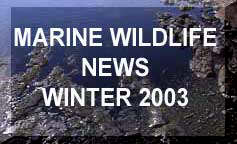 |
 |
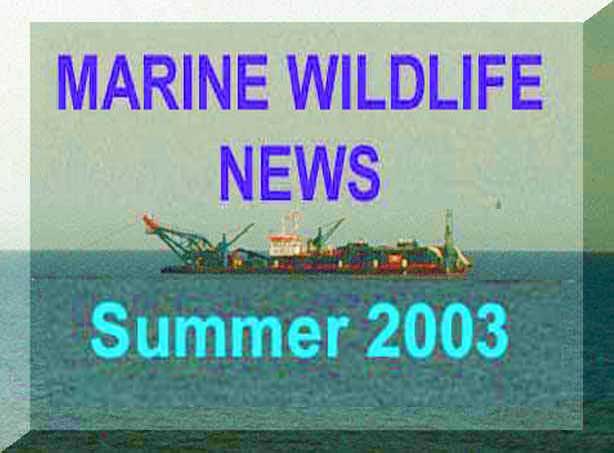 |
 |
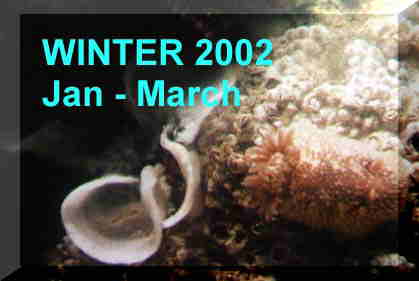 |
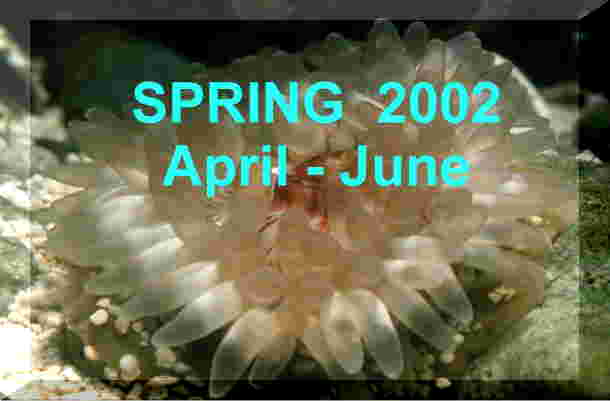 |
 |
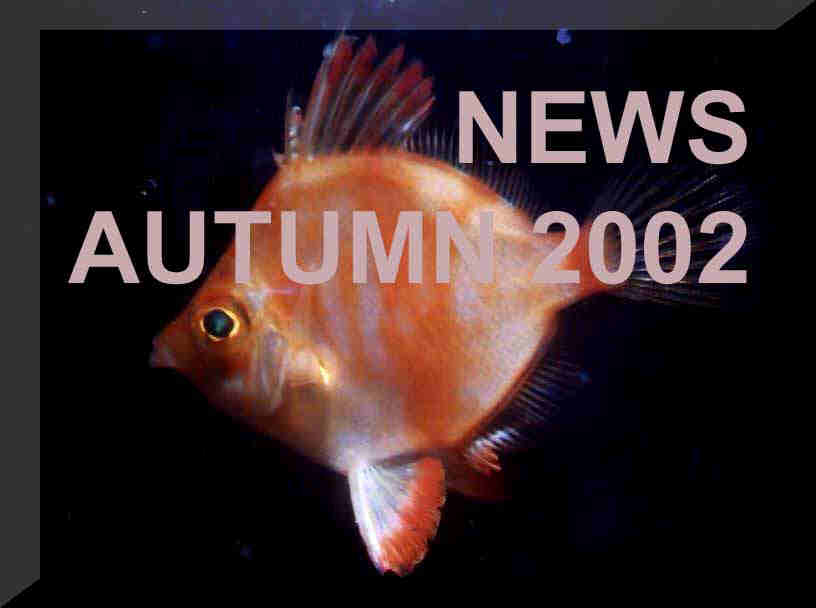 |
FOR EARLIER REPORTS CLICK ON THE BUTTON BELOW

The Marine Wildlife of the NE Atlantic Forum
PLEASE JOIN

MARINE WILDLIFE of the NE ATLANTIC EFORUM PAGE (LINK TO)
Nature Diaries [ Join Now | Ring Hub | Random | << Prev | Next >> ]
British
Marine Life Study Society
News 2005
News
2010
News 2003
News 2002
News 2001
News 2000
News 1999
|
Use these links if your are familiar with the scientific classifications of marine life |
The BMLSS (England) site commenced on 1 January 1997
|
|
 |
 |
Andy Horton, Webmaster
|
|
|
|
|
|
Membership Form |
News 2003 News 2010 |














